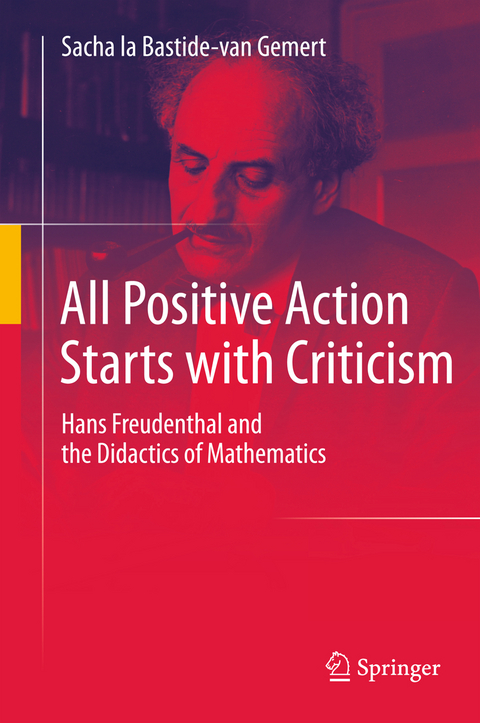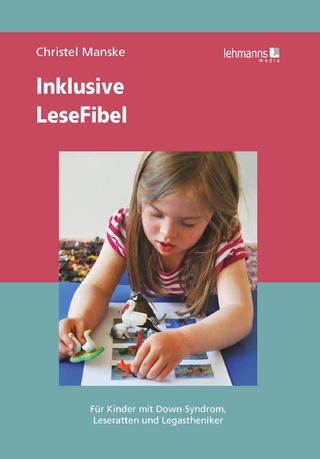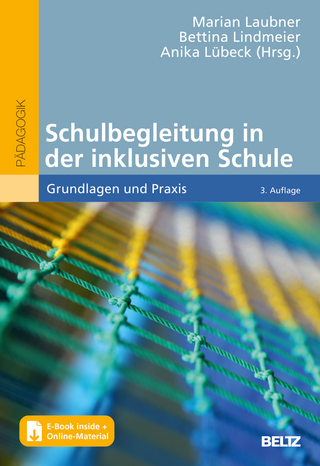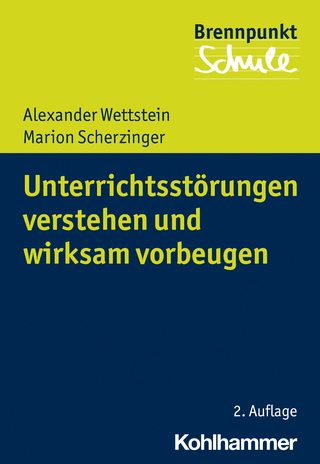
All Positive Action Starts with Criticism
Springer (Verlag)
978-94-017-9333-9 (ISBN)
This study provides a historical analysis of Freudenthal’s didactic ideas and his didactic career. It is partly biographical, but also contributes to the historiography of mathematics education and addresses closely related questions such as: what is mathematics and where does it start? Which role does mathematics play in society and what influence does it have on the prevailing views concerning its accompanying didactics?.
Hans Freudenthal (1905–1990), professor in mathematics, scientist, literator, but above all mathematics-educator, was inextricably linked to the changes which took place in mathematics education and didactics during the second half of the last century. His diversity as a scientist and his inexhaustible efforts to establish the didactics of mathematics as a seriously pursued science, made Freudenthal's influence in this area considerable. He foresaw an essential, practical role for mathematics in everyone’s life, encouraging students to discover and create mathematics themselves, instead of imposing a ready-made mathematical system. The theory of mathematics education thus developed in the Netherlands would gain world fame in the following decades.
Today, in the light of the discussions about mathematics education, in which the call for `genuine’ mathematics instead of the so-called 'kindergarten'-mathematics can be heard, Freudenthal's approach seems to be passé. However, the outcome of this study (which is mainly based on documents from Freudenthal’s vast personal archive) shows a more refined picture. The direct identification of 'kindergarten'-mathematics with Freudenthal’s view on mathematics education is not justified. 'Realistic mathematics' as advocated by Freudenthal includes more than just a practical introductory and should, among other things, always aim at teaching 'genuine' mathematics in the end.
Acknowledgements.- Chapter 1: Introduction - "A way to master this world’’.- Chapter 2: Mathematics education in secondary schools and didactics of mathematics in the period between the two World Wars.- 2.1: Secondary Education in the period between the two world wars.- 2.1.1: The origination of the school types in secondary education.- 2.1.2: Some school types.- 2.1.3: The competition between HBS and Gymnasium.- 2.2: Discussions on the mathematics education at the VHMO.- 2.2.1: The initial geometry education and the foundation of journal Euclides.- 2.2.2: The Beth committee and the introduction of differential and integral calculus.- 2.2.3: The controversy about mechanics.- 2.2.4: Educating the mathematics teacher.- 2.2.5: New insights and the Wiskunde Werkgroep (Mathematics Working Group).- Chapter 3: Hans Freudenthal – a sketch.- 3.1: Hans Freudenthal – an impression.- 3.2: Luckenwalde.- 3.3: Berlin.- 3.4: Amsterdam.- 3.5: Utrecht.- Chapter 4: Didactics of arithmetic.- 4.1: Dating of `Rekendidactiek’.- 4.2: Cause and intention.- 4.3: Teaching of arithmetic in primary schools.- 4.4: Freudenthal’s `Rekendidactiek’: the content.- 4.4.1: Preface.- 4.4.2: Auxiliary sciences.- 4.4.3: Aim and use of teaching of arithmetic.- 4.5: `Rekendidactiek’ ‘Didactics of arithmetic’): every positive action starts with criticism.- Chapter 5: A new start.- 5.1: Educating.- 5.1.1: Educating at home.- 5.1.2: `Our task as present-day educators’.- 5.1.3: `Education for thinking’.-5.1.4: `Educating’ in De Groene Amsterdammer.- 5.1.5: Education: a summary.- 5.2: Higher Education.- 5.2.1: Studium Generale.- 5.2.2: The teachers training.- 5.2.3: Student wage.- 5.2.4: Higher education: a ramshackle parthenon or a house in order?.- 5.3: The Wiskunde Werkgroep (the Mathematics Study Group).- 5.3.1: Activities of the Wiskunde Werkgroep.- 5.3.2: `The algebraic and analytical view on the number concept in elementary mathematics’.- 5.3.3: `Mathematics for non-mathematical studies’.- 5.3.4: Freudenthal’s mathematical working group.- Chapter 6: From critical outsider to true authority.- 6.1: Mathematics education and the education of the intellectual capacity.- 6.2: A body under the floor boards: the mechanics education.- 6.3: Preparations for a new curriculum.- 6.4: Probability theory and statistics: a text book.-6.5: Paedagogums, paeda magicians and scientists: the teacher training.- 6.6: Freudenthal internationally.- Chapter 7: Freudenthal and the Van Hieles’ level theory. A learning process.-7.1: Introduction: a special PhD project.- 7.2: Freudenthal as supervisor.- 7.3: `Problems of insight’: Van Hiele’s level theory.- 7.4: Freudenthal and the theory of the Van Hieles: from `level theory’ to `guided re-invention’.- 7.5: Analysis of a learning process: reflection on reflection.- 7.6: To conclude.- Chapter 8: Method versus content. New Math and the modernization of mathematics education.- 8.1: Introduction: time for modernization.- 8.2: New Math.- 8.2.1: The gap between modern mathematics and mathematics education.- 8.2.2: Modernization of the mathematics education in the Unites States.- 8.3: Royaumont: a bridge club with unforeseen consequences.- 8.3.1: Freudenthal in `the group of experts’.- 8.3.2: Royaumont without Freudenthal: the launch of New Math.- 8.4: Freudenthal on modern mathematics and its meaning for mathematics education.- 8.4.1: The nature of modern mathematics.- 8.4.2: Modern mathematics for the public at large.- 8.4.3: The mathematician "in der Unterhose auf der Strasse" ("in his underpants on the street").- 8.4.4: Fairy tales and dead ends.- 8.4.5: Modern mathematics as the solution?.- 8.5: Modernization of mathematics education in the Netherlands.- 8.5.1: Initiatives inside and outside of the Netherlands.- 8.5.2: Freudenthal: from WW to ‘cooperate with a view to adjust’.- 8.5.3: The Commissie Modernisering Leerplan Wiskunde.- 8.5.4: A professional development programme for teachers.- 8.5.5: A new curriculum.- 8.6: Geometry education.- 8.6.1: Freudenthal and geometry education.- 8.6.2: Freudenthal on the initial geometry education: try it and see.- 8.6.3: Axiomatizing instead of axiomatics – but not in geometry.- 8.6.4: Modern geometry in the education according to Freudenthal.- 8.7: Logic.- 8.7.1: ``Exact logic’’.- 8.7.2: The application of modern logic in education.- 8.8: Freudenthal and New Math: conclusion.- 8.8.1: A lonely opponent of New Math?.- 8.8.2: Cooperate in order to adjust.- 8.8.3: Knowledge as a weapon in the struggle for a better mathematics education.- 8.8.4: Freudenthal about the aim of mathematics education.- Chapter 9: Here’s how Freudenthal saw it.- 9.1: Introduction: changes in the scene of action.- 9.2: Educational Studies in Mathematics.- 9.2.1: Not exactly bursting with enthusiasm: the launch.- 9.2.2: Freudenthal as guardian of the level.- 9.3: The Institute for the Development of Mathematics Education.- 9.3.1: From CMLW to IOWO.- 9.3.2: Freudenthal and the IOWO.- 9.4: Exploring the world fromthe paving bricks to the moon.- 9.4.1: Observations as a father in `Rekendidactiek’.- 9.4.2: Observing as a grandfather: walking with the grand-children.- 9.4.3: Granddad Hans: a critical comment.- 9.4.4: Walking on the railway track: the mathematics of a three-year old.- 9.4.5: Observing and the IOWO.- 9.5: Observations as a source.- 9.5.1: Professor or senile grandfather?.- 9.5.2: The paradigm: the ultimate example.- 9.5.3: Here is how Freudenthal saw it: concept of number and didactical phenomenology.- 9.5.4: The right to sound mathematics for all.- 9.6: Enfant terrible.- 9.6.1: Weeding.- 9.6.2: Drumming on empty barrels.- 9.6.3: Freudenthal on Piaget: admiration and merciless criticism.- 9.7: The task for the future.- Chapter 10: Epilogue - We have come full circle.
| Übersetzer | Marianne Vincken, William Third |
|---|---|
| Zusatzinfo | 39 Illustrations, black and white; XV, 386 p. 39 illus. |
| Verlagsort | Dordrecht |
| Sprache | englisch |
| Maße | 155 x 235 mm |
| Themenwelt | Schulbuch / Wörterbuch |
| Mathematik / Informatik ► Mathematik | |
| Sozialwissenschaften ► Pädagogik ► Schulpädagogik / Grundschule | |
| Schlagworte | didactics of arithmetic • Didactics of Mathematics • Educational Studies of Mathematics • FIsme • Freudenthal Institute • Hans Freudenthal • History of ICMI • ICMI • mathematics education • New Math • realistic mathematics • realistisch rekenen • Rekendidactiek • Wiskunde Werkgroep |
| ISBN-10 | 94-017-9333-6 / 9401793336 |
| ISBN-13 | 978-94-017-9333-9 / 9789401793339 |
| Zustand | Neuware |
| Haben Sie eine Frage zum Produkt? |
aus dem Bereich


